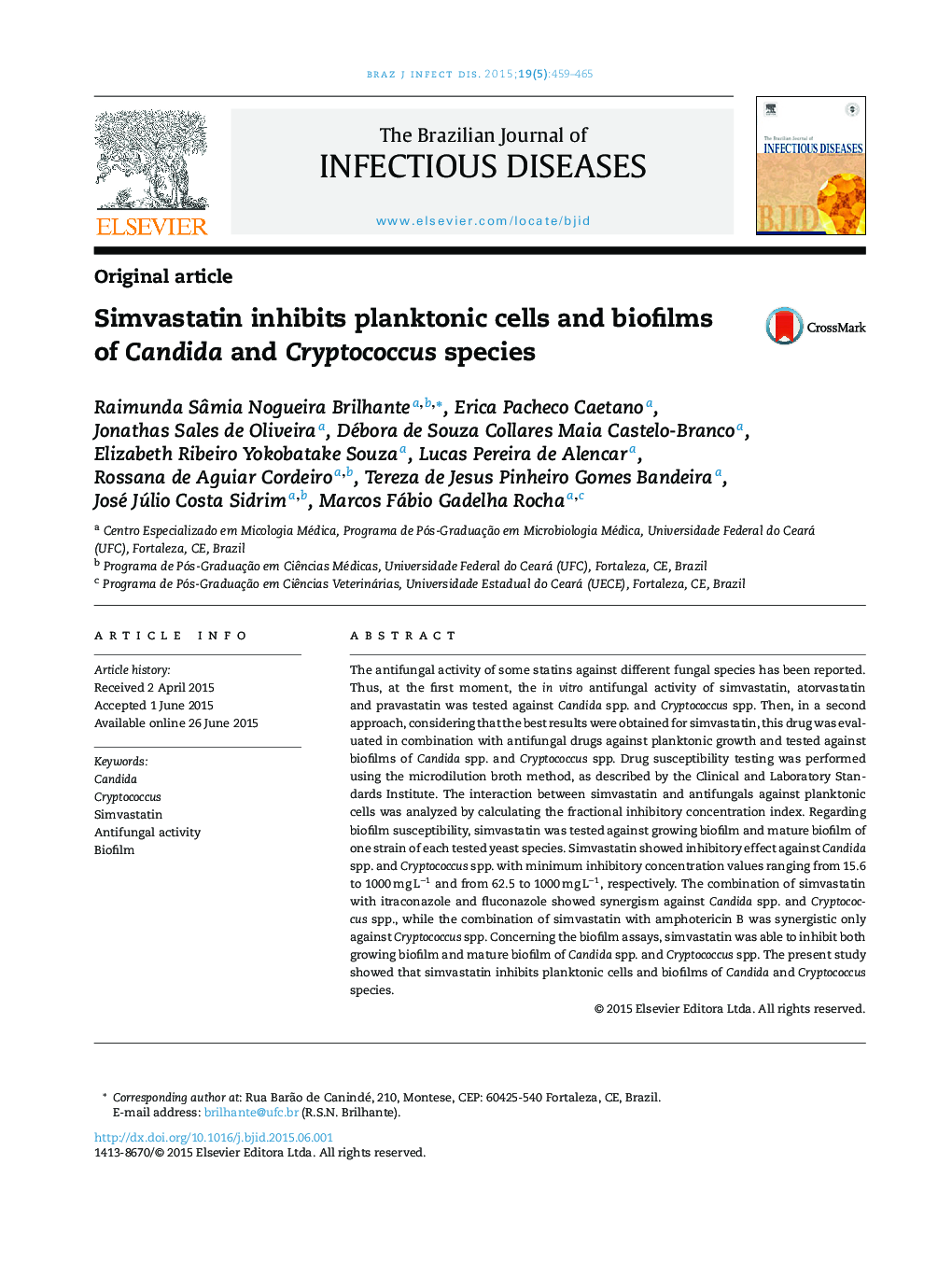| Article ID | Journal | Published Year | Pages | File Type |
|---|---|---|---|---|
| 3343799 | The Brazilian Journal of Infectious Diseases | 2015 | 7 Pages |
The antifungal activity of some statins against different fungal species has been reported. Thus, at the first moment, the in vitro antifungal activity of simvastatin, atorvastatin and pravastatin was tested against Candida spp. and Cryptococcus spp. Then, in a second approach, considering that the best results were obtained for simvastatin, this drug was evaluated in combination with antifungal drugs against planktonic growth and tested against biofilms of Candida spp. and Cryptococcus spp. Drug susceptibility testing was performed using the microdilution broth method, as described by the Clinical and Laboratory Standards Institute. The interaction between simvastatin and antifungals against planktonic cells was analyzed by calculating the fractional inhibitory concentration index. Regarding biofilm susceptibility, simvastatin was tested against growing biofilm and mature biofilm of one strain of each tested yeast species. Simvastatin showed inhibitory effect against Candida spp. and Cryptococcus spp. with minimum inhibitory concentration values ranging from 15.6 to 1000 mg L−1 and from 62.5 to 1000 mg L−1, respectively. The combination of simvastatin with itraconazole and fluconazole showed synergism against Candida spp. and Cryptococcus spp., while the combination of simvastatin with amphotericin B was synergistic only against Cryptococcus spp. Concerning the biofilm assays, simvastatin was able to inhibit both growing biofilm and mature biofilm of Candida spp. and Cryptococcus spp. The present study showed that simvastatin inhibits planktonic cells and biofilms of Candida and Cryptococcus species.
